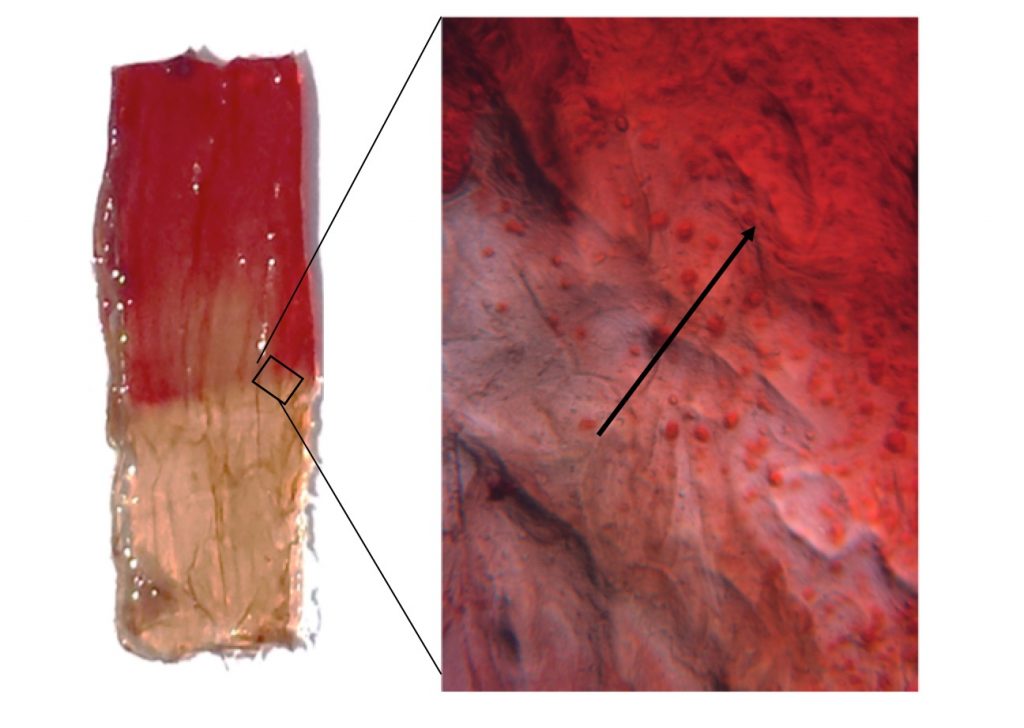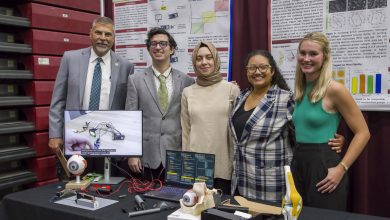3-D Printed Ligaments May Be an Ideal Way to Repair Injured Knees

New NIH Grant Investigates Fabricating ACL with Collagen and Bioglass
Sports such as basketball, tennis and soccer may be good for heart health, but the knees? Not so much. Landing jumps and quick changes of direction under the pressure of full body weight can cause tears in the anterior cruciate ligaments (ACL). But unlike torn muscles, ACLs do not heal themselves.
Currently, the way to repair a torn ACL is taking a healthy ligament from the injured patent or a donor to replace the damaged one, but those methods are not ideal and come with a set of possible complications. But Florida Institute of Technology-led research into 3-D printed tissue may eventually yield an ideal way to treat ACL injuries, which affect 150,000 Americans each year, according to The American Orthopedic Society for Sports Medicine.
Michael Fenn, assistant professor of biomedical engineering and Vipuil Kishore, assistant professor of chemical engineering are dual principal investigators on a new National Institute of Health grant that aims to produce a Bioglass-based material called BioGIMs made by using Raman spectroscopy data translated into a 3-D printed construct that compositionally, mechanically and biologically mimics the ACL connective tissue, which ranges from ligament to bone.
The central hypothesis of the work is that the BioGIMs will provide physicochemical cues (such as compositional, structural, and mechanical) that will stimulate material-directed stem cell differentiation without external growth factors (proteins or hormones used to influence biochemical activity in cells). In laymen terms, with an accurately engineered scaffolding in place, stem cells will be able to “sense” the properties of the underlying matrix and undergo tissue-specific differentiation (i.e., bone on one side, ligament on the other along with the fibrocartilage that connects the different tissues). The long term goal is to develop a synthetic graft implant that generates new ACLs tissue tailored to a patient’s needs with rapid and improved healing over current treatments.
Fenn and Kishore say the development of biomimetic gradients isn’t limited to ACL and could be used to regenerate of other vital joints such as the rotator cuff tendon and articular cartilage.
Read the details of the NIH project here.
%CODE1DISCOVERYMAGVOL13%





